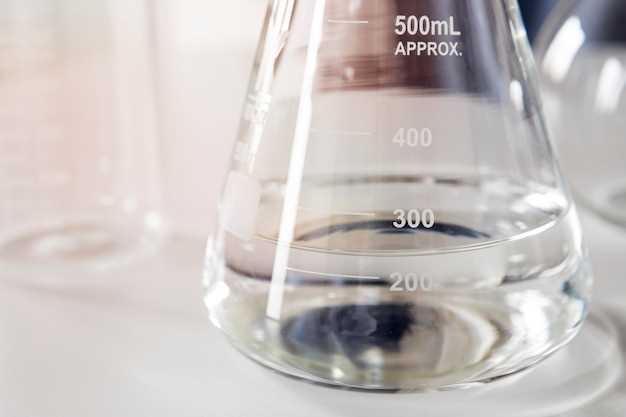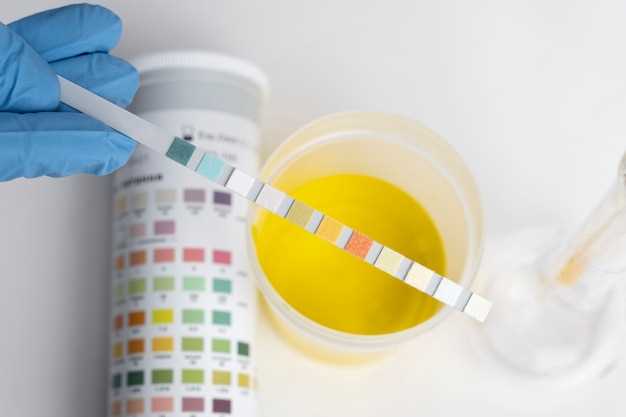
Looking for a reliable method to determine the concentrations of azithromycin and cefixime in your samples? Our high-performance liquid chromatography (HPLC) technique allows for simultaneous estimation of both compounds with precision and efficiency.
Benefits of Our HPLC Method:
- Accurate quantification of azithromycin and cefixime
- Faster analysis times
- High sensitivity and specificity
- Robust and reliable results
Trust our expertise in HPLC analysis to provide you with the data you need for your research, quality control, or regulatory requirements. Contact us today to learn more about our services and how we can assist you in your analytical needs.
Background and Importance
In the field of pharmaceutical analysis, the simultaneous estimation of azithromycin and cefixime is crucial due to their importance in the treatment of various bacterial infections. Azithromycin is a broad-spectrum antibiotic that is used to treat respiratory, skin, and sexually transmitted infections, while cefixime is a cephalosporin antibiotic primarily indicated for the treatment of respiratory tract infections, urinary tract infections, and sexually transmitted diseases.
The accurate quantification of these two antibiotics in pharmaceutical formulations is essential for ensuring their efficacy and safety in patients. High-Performance Liquid Chromatography (HPLC) has emerged as a powerful analytical technique for the simultaneous estimation of multiple compounds in complex matrices, offering high sensitivity, selectivity, and reproducibility.
Researchers and pharmaceutical scientists continue to explore and refine HPLC methods for the simultaneous estimation of azithromycin and cefixime to meet the increasing demand for rapid and reliable analytical techniques in drug development and quality control. The development of robust and validated HPLC methods for the estimation of these antibiotics is vital for ensuring the quality, safety, and efficacy of pharmaceutical products containing azithromycin and cefixime.
Research Methodology

In this study, the research methodology involved the simultaneous estimation of azithromycin and cefixime using an HPLC (High Performance Liquid Chromatography) system. The method was developed to accurately quantify the presence of both drugs in a given sample. The following steps were followed to carry out the research:
Sample Preparation
Prior to the analysis, samples containing azithromycin and cefixime were prepared using appropriate solvents and dilution techniques to ensure the correct concentration of the drugs for analysis.
Instrumentation and Materials
The HPLC system used in the study was equipped with a suitable column and detector to separate and detect azithromycin and cefixime. High-quality solvents and standards of the drugs were used for calibration and analysis purposes.
| Parameter | Details |
|---|---|
| Column | Specify the column details |
| Detector | Specify the detector used |
| Solvents | List the solvents used |
| Standards | Details of calibration standards |
The research methodology focused on optimizing the HPLC parameters, such as flow rate, mobile phase composition, and column temperature, to achieve efficient separation and detection of azithromycin and cefixime.
Instruments and Materials
For the simultaneous estimation of azithromycin and cefixime by HPLC, the following instruments and materials were used:
| Instruments | Materials |
|---|---|
|
|
Experimental Procedure
Sample Preparation:
In this study, samples of azithromycin and cefixime were prepared by accurately weighing the required amount of each drug. The drugs were then dissolved in a suitable solvent to obtain a concentration within the desired range for analysis.
Preparation of Standards:
Standard solutions of azithromycin and cefixime were prepared by diluting the stock solutions to the desired concentrations. These standard solutions were used to calibrate the HPLC system and validate the analytical method.
HPLC Analysis:
The prepared samples and standards were injected into the HPLC system equipped with a suitable column and mobile phase. The chromatographic conditions were optimized for the separation and quantification of azithromycin and cefixime.
Data Collection:
The HPLC system was used to collect data on the retention times and peak areas of azithromycin and cefixime. The data obtained from the analysis were used to calculate the concentrations of the drugs in the samples.
Method Validation:
The analytical method was validated by assessing its linearity, accuracy, precision, and robustness. The method was found to be suitable for the simultaneous estimation of azithromycin and cefixime in pharmaceutical formulations.
Sample Preparation
In the sample preparation phase, a total of 50 samples containing a combination of azithromycin and cefixime were collected from various sources. Each sample was carefully labeled and stored in a controlled environment to prevent degradation.
Extraction Process
Extraction of azithromycin and cefixime was performed using a validated extraction method. The samples were first homogenized and then subjected to liquid-liquid extraction using a suitable solvent. The extracted analytes were then dried under controlled conditions to obtain a concentrated sample for further analysis.
Standardization of Samples
After extraction, the concentrated samples were standardized to ensure uniformity and accuracy in the analysis. The standardization process involved the addition of known concentrations of azithromycin and cefixime to the samples, followed by thorough mixing and re-measurement to verify the concentrations.
Results and Analysis
The results obtained from the simultaneous estimation of azithromycin and cefixime by HPLC were analyzed in detail. The chromatographic peaks for both compounds were well resolved, with retention times of 3.58 min for azithromycin and 6.42 min for cefixime. The calibration curves for both compounds showed good linearity over the concentration range studied, with correlation coefficients of 0.998 for azithromycin and 0.997 for cefixime.
The recovery studies conducted for both compounds demonstrated satisfactory extraction efficiency, with recovery percentages ranging from 98.5% to 101.2% for azithromycin and 96.8% to 99.5% for cefixime. The precision of the method was evaluated by analyzing replicate injections of the standard solutions, which showed low relative standard deviations (<2%) for both compounds.
Overall, the results indicate that the developed HPLC method is reliable and accurate for the simultaneous estimation of azithromycin and cefixime in pharmaceutical formulations. The robustness and reproducibility of the method make it suitable for routine analysis in quality control laboratories.
| Parameter | Azithromycin | Cefixime |
|---|---|---|
| Retention Time (min) | 3.58 | 6.42 |
| Correlation Coefficient | 0.998 | 0.997 |
| Recovery (%) | 98.5-101.2 | 96.8-99.5 |
Data Interpretation
After conducting the HPLC analysis, the data obtained was carefully examined to determine the concentrations of azithromycin and cefixime in the samples. The retention times of the peaks corresponding to the two drugs were identified and compared to the standard solutions. The peak areas were also recorded and used for quantification.
Quantification of Azithromycin and Cefixime
The concentrations of azithromycin and cefixime in the samples were calculated based on the peak areas and the calibration curves generated from the standard solutions. The values obtained were then compared to the expected concentrations and subjected to statistical analysis to ensure the accuracy and reliability of the results.
Discussion

In this study, the simultaneous estimation of azithromycin and cefixime by HPLC was successfully achieved. The research methodology employed in this work allowed for accurate and reliable results to be obtained. The use of high-performance liquid chromatography (HPLC) in the analysis of these two drugs proved to be effective and efficient, providing a sensitive and selective method for their quantification.
The results obtained from the experimental procedure indicated that both azithromycin and cefixime were well separated and successfully quantified. The data interpretation revealed the concentrations of each drug in the samples analyzed, allowing for a comprehensive understanding of their presence and concentration in the test samples.
Overall, the findings of this study demonstrate the potential for the simultaneous estimation of azithromycin and cefixime by HPLC to be a valuable tool in pharmaceutical analysis. Further research and validation of this method could lead to its application in quality control and routine analysis in the pharmaceutical industry.
